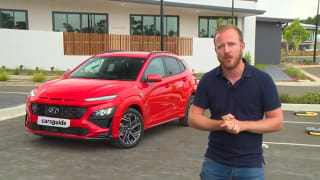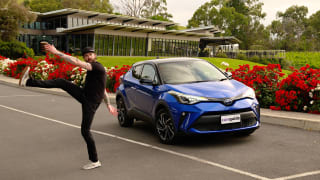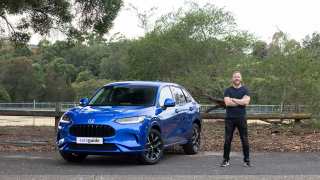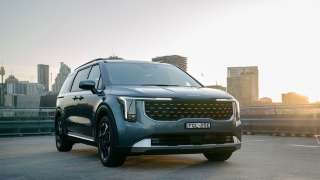The Ti is the top-spec Nissan Juke, and while it comes packed with a lot of gear, there are some areas where it misses out compared to rivals.
With an MSRP of $36,490, our Ti is the most expensive version, sticking it squarely against similarly sized rivals like the Toyota C-HR (from $35,165), Mazda CX-30 (G20 Touring - $35,190), and Hyundai Kona (N-Line $36,300).

I’ve drawn those rivals because not only are all three hugely popular and offering the kind of edgy styling the target buyer for the Juke will be looking for, but they also have one key advantage over the Juke, in that they can be chosen either as a mild hybrid, full hybrid, or electric.
Not having those options seems a dangerous flaw for a car that only arrived in Australia a year ago. There are other things, too. While the Juke’s specification covers off the main bases, for a top-spec variant there are tech areas where it is lacking compared to its rivals.
For example; while it locks in concept-car looks with huge 19-inch alloy wheels, LED headlights, and plush heated synthetic leather seats for the front passengers, there’s only an 8.0-inch multimedia touchscreen (some rivals will offer 10+ inch screens), no fully digital instrument cluster (even this car’s Renault Captur cousin gets one of these), no head-up display (Kona, CX-30), and no wireless charging.

Okay, so it’s a bit give and take with the spec, but I will say the Apple CarPlay connectivity, built-in navigation and tidy analog dash with a 4.2-inch TFT info screen between the dials worked seamlessly for me. Of particular note is the Bose sound system, which, even at low volumes, was superb and an unusual but perhaps fitting big-ticket selling point for an SUV that looks like this.
Privacy glass enhanced the black-on-orange tinge of our test car, as did the brightly coloured interior, which blends orange leather highlight pieces with matte silver and piano-black plastic highlights.

Elsewhere, the Ti gets single-zone climate control, heated front seats, keyless entry and push-start ignition, tyre-pressure monitoring, ambient interior lighting with illuminated kick plates, and a surround parking camera.
The Juke has been designed to look great and feel great, but is still missing not only electrified engine choices but some high-end tech, too.






















